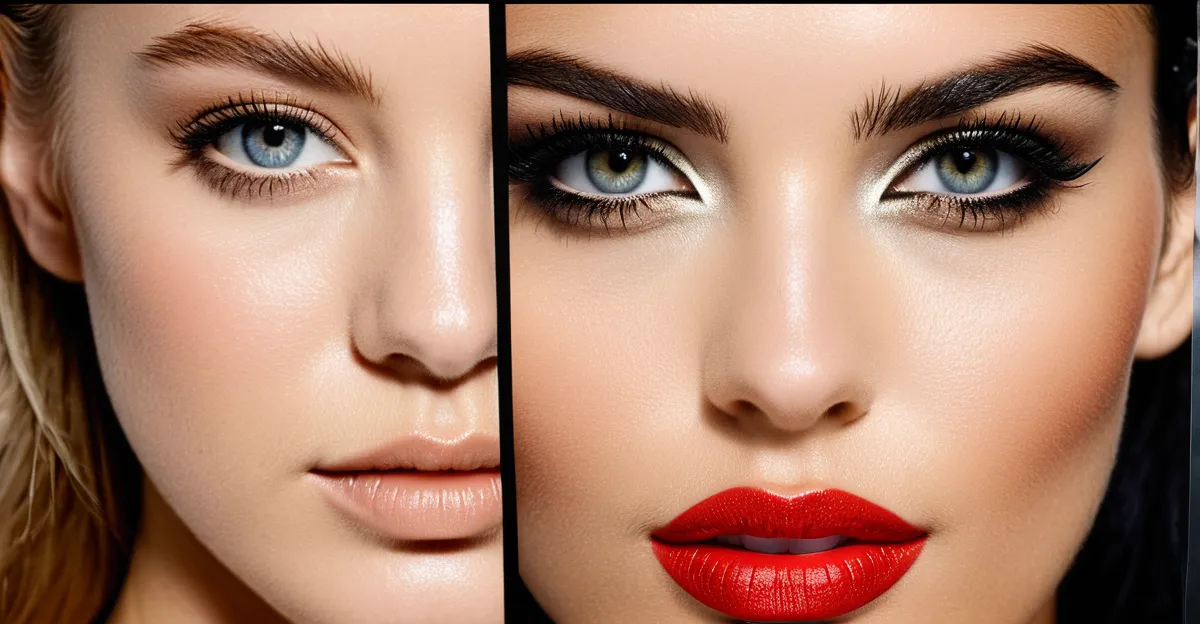Overview of UK Women’s Fashion Trends
Current trends in UK women’s fashion are defined by a commitment to sustainable practices and inclusivity. Sustainable fashion has gained traction as consumers become more eco-conscious, leading to a shift towards ethically produced and environmentally friendly clothing options. Inclusivity, a significant trend, celebrates diverse body types, sizes, and ethnic backgrounds, pushing brands to offer a wider range of contemporary styles.
Social media and celebrity culture heavily influence fashion trends today. Platforms like Instagram amplify new styles, allowing trends to go viral quickly. Celebrities often spearhead fashion movements, showcasing emerging designers and setting new style benchmarks. This cultural interchange creates a fast-paced fashion environment where trends come and go rapidly but leave a lasting impact on consumer preferences and UK women’s fashion.
Have you seen this : Title: How Has UK Women’s Fashion Evolved Over the Decades?
Statistics highlight a surge in consumer demand for specific styles. For instance, the market for sustainable fashion is expanding at an unprecedented rate, reflecting an enduring shift toward eco-friendly consumption. Additionally, inclusivity has prompted many brands to launch more size-inclusive lines, resonating with a broader audience and driving the industry towards more representative practices.
The confluence of sustainable fashion and inclusivity, alongside the amplifying power of social media, marks a transformative era in UK women’s fashion, characterized by a vibrant mix of traditional elegance and contemporary styles.
Also to read : How Can UK Women’s Fashion Innovations Shape Global Trends?
Key Influencers in UK Women’s Fashion
In the dynamic world of UK women’s fashion, fashion designers and influencers play pivotal roles in shaping trends and consumer behavior. Renowned UK designers like Stella McCartney and Vivienne Westwood have been at the forefront, crafting collections that emphasize sustainability and innovation. Their bold visions and daring designs often set the benchmark for what’s possible within the fashion domain.
Alongside designers, social media influencers wield substantial power, transforming personal styles into mainstream trends. Platforms such as Instagram serve as the stage where influencers showcase unique ensembles, offering real-time fashion inspiration to followers. This digital interaction significantly sways consumer decisions, with a single post capable of propelling a brand into the spotlight.
Cultural icons like the Duchess of Cambridge and pop sensation Dua Lipa also redefine fashion norms, balancing traditional elegance with avant-garde flair. Their fashion choices often highlight inclusivity and sustainability, challenging conventions and expanding the fashion narrative. By seamlessly blending individual style with societal values, these icons foster a fashion landscape where innovation and expression thrive.
The Impact of Societal Changes on Fashion
Fashion in the UK has progressively become a mirror reflecting social movements like feminism and body positivity. These movements champion rights and representation, subsequently influencing fashion choices to emphasize diversity and inclusion. With wider acceptance of various body types, the demand for clothing sizes that cater to all has grown significantly, pushing brands to innovate in size ranges and styles.
Moreover, these societal shifts have heightened the call for diversity in fashion representation. Consumers now look for brands that echo their own values, driving a transformation in advertising and runway presentations to feature models of varied ethnicities, sizes, and backgrounds. This change ensures that fashion not only caters to a broader audience but also fosters a sense of belonging.
The COVID-19 pandemic introduced unique economic factors that altered purchasing behaviors. Consumers became more conscious of their spending, leaning towards sustainability and quality over impulsive fashion choices. This shift highlighted a preference for versatile pieces that balance style and practicality. The pandemic, therefore, deepened awareness about fashion’s impact on the environment and encouraged responsible consumption.
As social movements continue to inspire change, and as economic realities evolve, the trajectory of UK women’s fashion keeps adapting to meet the expectations of a discerning and ever-growing customer base. The impact of these broader societal changes is seen in the continuing push towards more inclusive, sensible, and sustainable fashion practices.
Historical Context of Women’s Fashion in the UK
Women’s fashion in the UK has undergone significant changes over the decades, each era leaving a lasting imprint on how style is perceived today. In the early 20th century, women’s wardrobes were characterized by Edwardian elegance, with floor-length skirts and structured blouses defining the look. As decades progressed, fashion reflected the social and economic climates, with the 1920s flapper dresses symbolizing a break from Victorian constraints. The post-war period saw the emergence of New Look by Christian Dior, which reintroduced an emphasis on femininity through cinched waists and full skirts.
The 1960s brought a fashion revolution with designers like Mary Quant popularizing the miniskirt, a statement of youthful rebellion and freedom. This era marked a move towards more modular dressing, and bold patterns dominated wardrobes. The 1980s, characterized by power dressing, saw women adopting tailored suits and shoulder pads, reflecting their increasing presence in the workforce.
Today, we see a transformation of past trends into contemporary styles, with vintage elements resurfacing in modern contexts. Sustainable practices and inclusivity, as seen in current trends, bring a renewed dimension to historical influences. Understanding the evolution of past trends provides insight into how UK women’s fashion continues to forge its dynamic path, honoring its rich fashion history while innovating for the future.
Notable UK Fashion Events and Their Influence
The UK fashion scene is a vibrant tapestry of events and showcases that set the stage for emerging trends and pioneering designers. Central to this landscape is the prestigious London Fashion Week, a biannual event drawing global attention by celebrating both established and fledgling designers. An arena for innovation, it offers a glimpse into the evolving aesthetics of UK women’s fashion.
Fashion weeks like this serve as critical platforms where industry influencers and retail investors converge to discover and support avant-garde talents. Shows are meticulously curated to exhibit groundbreaking collections, from traditional craftsmanship to futuristic designs. This dynamic interplay elevates the UK as a hub of fashion creativity and cultural exchange.
Throughout these events, themes of sustainability and ethical fashion frequently dominate the conversation, echoing a broader industry commitment to responsible practices. Several designers utilize the spotlight to present collections that prioritize eco-friendly materials and inclusive sizing, reinforcing the shift towards a more conscientious fashion industry.
Moreover, UK fashion events are not only trendsetters but are also significant economic drivers, boosting tourism and commerce. The symbiotic relationship between these gatherings and the wider fashion narrative underlines their pivotal role in shaping the future of UK women’s fashion.
Future Directions in UK Women’s Fashion
Innovation and technology are reshaping the landscape of UK women’s fashion, heralding a new era of future trends. As consumer preferences continue to evolve, the industry is exploring ways to integrate cutting-edge technology into fabric and design processes. Smart textiles, which can change color or monitor health metrics, are starting to gain traction. These advancements promise significant shifts in how fashion is both conceptualized and consumed.
Sustainability remains at the forefront of these future directions, with brands experimenting with eco-friendly materials such as biodegradable fabrics and recyclable textiles. Innovations in manufacturing processes aim to reduce waste and carbon footprints, aligning with a growing consumer push for responsible fashion.
The role of digitalization cannot be understated. Virtual reality (VR) and augmented reality (AR) are transforming the shopping experience, offering consumers the ability to virtually try on clothes. This not only enhances convenience but also reduces the need for physical stock, contributing to environmental conservation.
Predictions suggest that as consumer values increasingly prioritize sustainability and tech-driven solutions, these trends will heavily influence the paths brands choose. UK women’s fashion is poised to embrace these changes, reflecting a commitment to innovation and responsible practices, ultimately redefining the fashion narrative.

